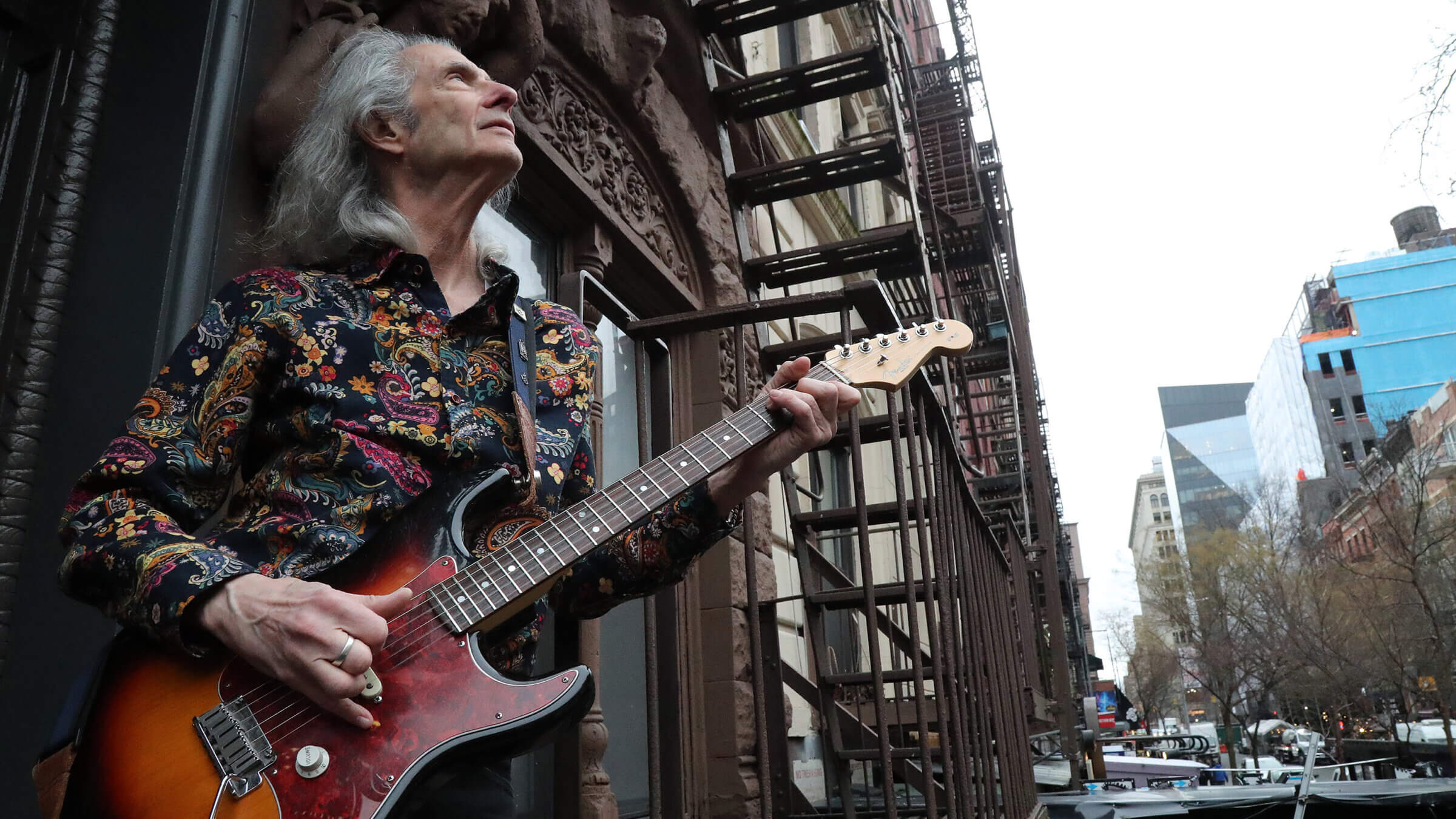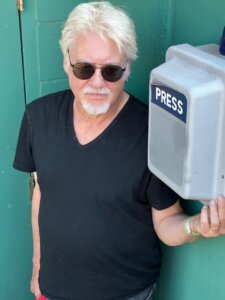How a Jewish kid from Upper Manhattan became a rock ‘n’ roll legend
Lenny Kaye is more than Patti Smith’s right-hand man; he’s a historian, an archivist, and a keeper of the rock music faith

Lenny Kaye in New York, 2024. Photo by Getty Images
You probably know Lenny Kaye as Patti Smith’s right-hand man — guitar-slinger and co-songwriter going back to her debut album, Horses, in 1975. And also, perhaps, as the chronicler and compiler of the famous double-album of garage rock and psychedelic gems from the ‘60s released in 1972, Nuggets: Original Artyfacts from the First Psychedelic Era, 1965-1968.
Kaye also published a book last year, Lightning Striking: 10 Transformative Moments in Rock and Roll, where he passionately and deeply delved into scenes, sounds and cities that were especially integral to rock ‘n’ roll, starting in Memphis in 1954.
Earlier this year in Gloucester, Mass., Kaye capped an off-and-on tour he’d been doing for a year, which celebrated the Nuggets era. He hooked up with Boston-area musicians and out-of-towner, have-guitar-will-travel ringer, former REM-er Peter Buck, who had been on the whole tour. They played the Seeds’ “Pushin’ Too Hard,” the song he felt best defines the Nuggets era, the Stooges’ “I Wanna Be Your Dog” and the Modern Lovers’ “Roadrunner.”
Unquestionably, Kaye’s life has been one of music. Among the hats he’s worn, (and some he still wears): fan, record store clerk, critic, working musician, DJ, historian, archivist, collector and producer.
“When you’re self-employed, you have to do everything,” Kaye told me during a Q & A earlier this spring. “Someone once described me as a ‘friend to music’ and I believe that truly. I love music. I love playing, I love listening, I love waking up in the morning with music on my mind.”
Kaye, who is 77, was born to Jewish parents in Upper Manhattan. His father changed the family name from Kusikoff to Kaye when Lenny was just a year old. He says in many ways he’s not so much different from the kid growing up in Jamaica, Queens, where his family moved during the 1950s and then Brunswick, NJ in 1960, when Kaye was 13.
He moved from the East Village 37 years ago for East Stroudsburg, Pennsylvania, just over the border from New Jersey by the Delaware Water Gap, where he lives with his wife Stephanie.
“I think I’m the same,” he says. “I’m obsessed with music. I love the rabbit hole and thank you, internet. I hear of an artist I know vaguely and I just follow it along. What can I say? It’s all out there, so many artists you’ve never heard before. I just find genres. I’m really deep into ska music of the ‘60s now. I’ve spent time in be-bop. I always thought, ‘Oh, Charlie Parker, he’s a genius,’ but I didn’t know why and I didn’t hear it.
“And then one day, I heard a record by a piano player named Dodo Marmarosa who played on Charlie Parker’s California recordings in 1946 and later went crazy. He pushed a piano out a window to see what it would sound like when it hit the ground — my kind of guy! But he has a song called ‘Bopmatism’ [with Parker on it] and I listened to it and it was so hooky that I suddenly unlocked the be-bop door. I felt the excitement of what it must have been like on West 48th street in that moment in time, Kind of like the punk rock of its day.”
Kaye, along with Smith, was part of the early days of CBGB, that dingy, narrow club on the Bowery, a spot you’d walk to while being careful to step over discarded syringes.
“I like these scenes where they’re kind of under the radar and nobody knows what they’re doing,” Kaye told me. “And it hasn’t got a definition yet and they’re figuring it out. And all of a sudden there’s a locus of energy where music, especially rock and roll, evolves. That moment I experienced it at CBGB, where you got these random renegade bands playing in a place that was about as off the beaten path as can be. And all of a sudden, you can feel the energy coalesce like space dust kind of comes together and forms a planet.
Some of the scenes and cities he wrote about in his book required deep research; others he experienced first-hand, like San Francisco and Detroit. As to the former, “I just wanted to go there and see the Grateful Dead who you couldn’t hear because they hadn’t [yet] made a record.” And the latter: “The Detroit rock scene with the Stooges and the MC5. It’s so great to be a part of that when it happens and I’ve been privileged to be a part of it.”
“I believe music exists in the present tense,” Kaye says. “I’m not a person that says, ‘Ooh, music was better then’ —well, yeah, it was better then — but that’s then. I don’t wanna see a bunch of garage bands from the year 2024 sounding like the garage bands on Nuggets, ’cause that’s already been done.”
Obviously, Kaye has a substantial record collection. How big?
“It could be bigger,” he said. “I’d say about maybe 3,000 albums, and about 3,000 singles, and CDs that keep multiplying. And I just got a 1950s Voice of Music console 78 player from the ‘50s.”
“I really hope to have a quiet summer this year,” Kaye told me. “I’m gonna buy like some nice sativa and spend some quality time with my records. And then I’ll never get rid of ’em.”
The future of Patti Smith and her band are up in the air, as is most often the case.
“She does visual arts and the written word and, of course, music,” said Kaye. “She is really gifted in terms of channeling the inner artist within her. Like I always say, I’m so privileged to be by her side and I’ve never seen Patti ever sing a false note, never go into ‘performance’ mode. She always wants to make each night unique to the audience out there.”
Believe it or not, Kaye has a life outside of music. “ ‘Life is 90 % maintenance and 10 % creativity,’” he told me, quoting folk singer Eric Andersen. So: Kaye cleans the cat box. He walks his dog. “And then there’s the damn turtle, 31 years old, Squirmy. My daughter bought it in Chinatown when it was [tiny], left it with me and I learned how to take care of it. I just bought a 1961 Thunderbird – yeah baby! — so that’s going to entertain me for a while. And then, like anybody, I watch TV.”
















